Medical Education
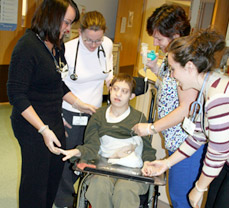
Recognizing that it can’t provide healthcare for everyone, Matheny has taken on the responsibility of trying to ensure that future healthcare professionals understand how to care for and treat people with disabilities.
Every Wednesday, third-year medical students from the Rutgers New Jersey Medical School rotate through the hospital to learn how to treat and interact with its patients. Matheny has also established internship and training programs with close to 100 colleges and universities to train allied professionals.
This program teaches medical students how to communicate with someone with developmental disabilities. If communication is done properly the communications process is compounded by the fact that many of the most severely disabled patients are non-verbal, communicating in a variety of ways – from simple “yes” and “no” signals to utilizing sophisticated computerized talking machines.
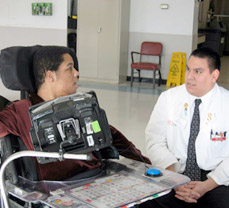
But communicating is more complicated than just understanding each other, according to Kenneth L. Robey, Ph.D, Administrative Manager of Quality Improvement, Patient Safety and Regulatory Affairs. “There are not only the mechanics of how you communicate with someone with a disability,” he explains. “There is also the subtext of attitudes toward someone with a disability and how those attitudes impact on the quality of care you’re going to provide. There is the tendency that people have to treat adults who have disabilities as if they were children. That’s an attitude that’s very difficult to remedy or change. It impacts on the extent to which the healthcare professional will let the patient be a contributor or a partner.”
The medical students do exercises with the patients where they need to draw out ‘yes’ or ‘no’ answers. This, says Dr. Robey, “can be very different from a normal patient interview. At the end of the simulation exercise, the patients are quite good at providing feedback to the medical students, either using their electronic communication devices or with more yes/no questioning.” In addition to exercises directly related to communication, on-site teaching is done. We have a standardized patient exercise in which the students put into practice what they’ve learned. We try to give the medical students a sense of looking beyond the patients’ disabilities to learn what their abilities are.
What's Happening
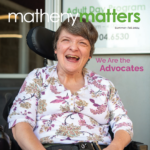
Matheny Matters Summer/Fall 2024
Please enjoy the latest issue of Matheny Matters here. Sincere thanks to all who helped put this beautiful publication...
Read More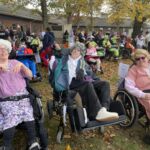
Halloween 2023
Halloween is an extra special time of year at Matheny! Trunk or Treat, the Halloween Parade, and a special...
Read More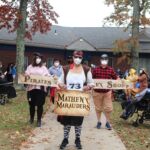
Halloween Parade 2022
Halloween landed on a Monday in 2022, but that certainly didn’t dampen the spirits of those participating in our...
Read More

